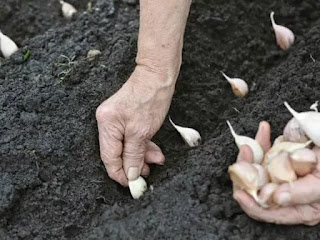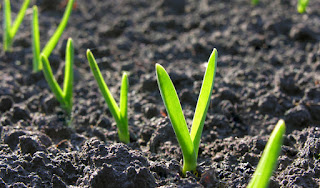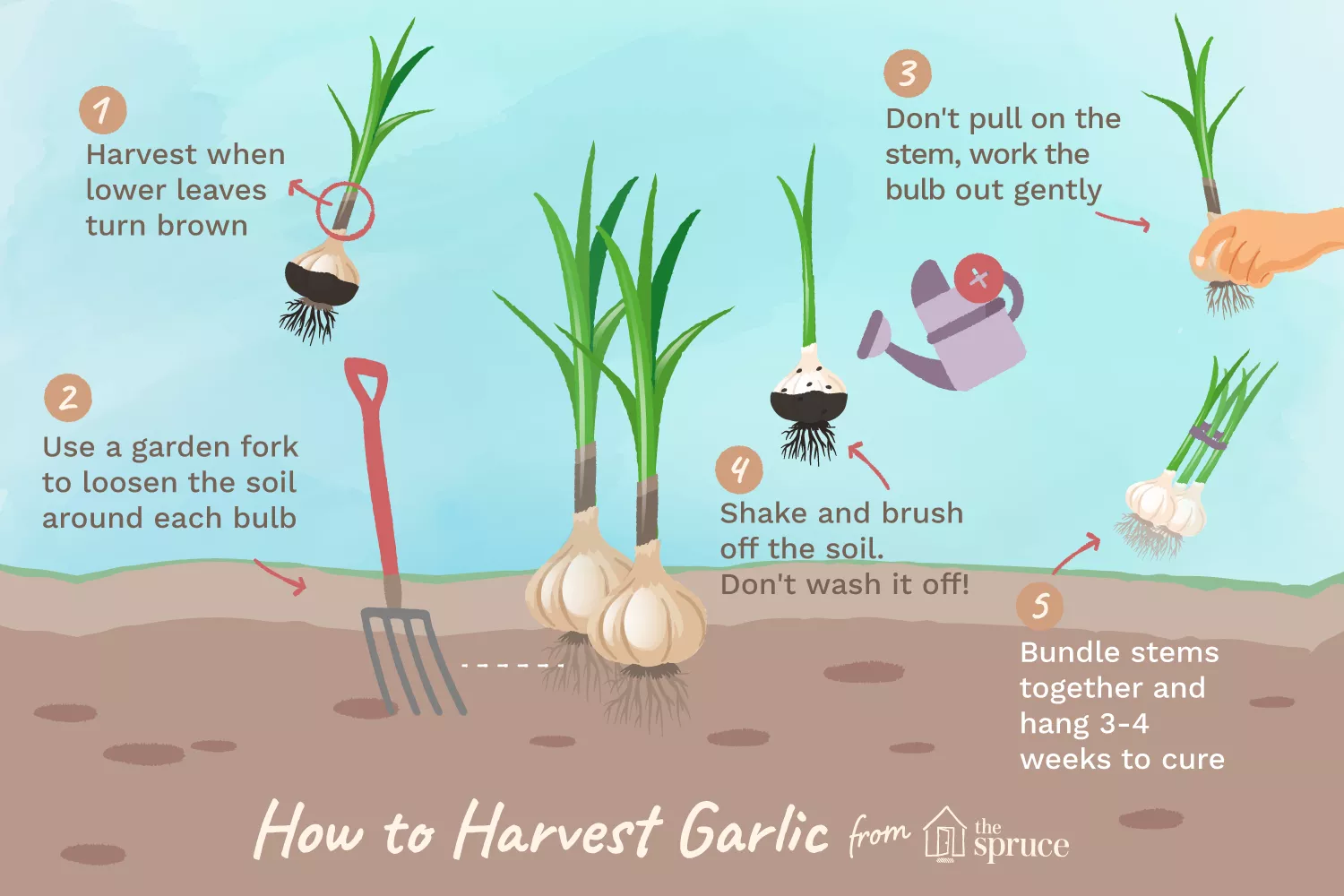
Before last fall, I never tried to grow my own garlic. I always figured that since it’s so accessible from the grocery store year-round, there’s no point in putting in the effort to grow it myself…especially when there are so many other fun heirloom veggies to grow! But I was given a few extra bulbs of garlic from a friend last fall, and decided to give growing my own garlic a try.
Typically when I try something new, I tend to assume that whatever I’m trying won’t work out the first time, but that it will be fun to fail and learn how to do it properly for my next noble attempt. So of course, I figured that there was no chance that these tiny garlic cloves would actually form into whole bulbs by next July, and that at the very least they might deter bug pests from the garden throughout the summer. But lo and behold, what a special treat it was to dig around in the soil this summer and pull up my very own fresh bulbs of garlic!
Now that I’ve tried my hand at it, I can’t recommend growing garlic enough. Furthermore, since garlic planted in Fall typically yields bigger, more flavorful garlic cloves, Fall is the perfect time to learn how to do it for a summertime harvest next year!
Here’s why I love planting my own garlic:
- It’s such an easy crop to grow. Whether you’ve never grown food before or are an avid gardener, garlic is an accessible and easy crop to grow. It doesn’t require much love and attention as it shoots up tiny sprouts in the springtime and forms a big bulb over the summer. And since it’s such an easy-going plant, the little bit of effort exerted in the fall results in a wonderful harvest of garlic bulbs next summer!
- Fresh garlic is too incredible to be described. I didn’t expect much when I peeled and cut into my freshly harvested garlic this summer. Sure, fresh produce is always better than store-bought, but garlic is garlic, right?…Oh, how wrong I was. It’s impossible to convey how wonderfully fresh, fragrant, and flavorful a homegrown clove of garlic is! If you’re a garlic fan, please grow some this year so you can join the I-Love-Fresh-Garlic Club. You’ll be so glad you did!
- Plus, garlic is a Superfood. Superfoods are defined as “a food that is rich in compounds (such as antioxidants, fiber, or fatty acids) considered beneficial to a person’s health.” Garlic is often associated with this definition because of the many health benefits it has to offer. According to Healthline, garlic is one of the most nutrient-dense foods on the planet, ranked just below salmon, kale, and seaweed. Raw garlic has antifungal and antibacterial properties, and is high in vitamins C, B1 and B6, calcium, potassium, copper, manganese and selenium, along with other beneficial compounds. Some studies also suggest that it can lower blood pressure, has cancer-fighting properties, and may reduce the risk of heart disease.
- And it might just keep the vampires away! With Halloween on its way, it’s time to bring out the garlic to keep evil spirits at bay (according to tradition, anyway). Garlic has a rich history in folklore; some believed that since garlic deters some blood-sucking insects, it must also keep blood-sucking evil spirits away, like vampires, werewolves, and zombies. And this belief does make some sense when connected to our garden landscape. The sulfur compounds in garlic make it an excellent repellent against insect pests in the garden and unwanted plant-munching animals, like deer and rabbits. In fact, repellents like Liquid Fence use garlic as one of the primary ingredients! With so many wonderful benefits, why not try your hand at growing some garlic in your own soil?
All you need to get started with your own little garlic farm is a few bulbs of garlic-- local and fresh garlic is wonderful, so if you can borrow a few bulbs from a gardener friend who harvested garlic this summer, you’ll be starting out with the cream of the crop! Typically, garlic bulbs are also sold at local rural stores come fall time, and they can be purchased online via seed/plant catalogs as well.

Garden Guides suggests that around mid-October, after the first frost but four to six weeks before the ground freezes, garlic can be planted anywhere in your garden that is sunny with rich, well-drained soil. A few days before planting your garlic, break the bulb apart and separate the cloves, but don’t peel them. When planting the cloves, place them just a few inches deep in the soil and six inches apart, with the pointed ends facing up. Then cover the newly planted bulbs with about four inches of mulch to keep them cozy over the winter, and voila! All that’s left to do is wait.

Come late springtime, you should start to see tiny garlic sprouts reaching through the mulch. These cute little sprouts will not need much care throughout the spring, but remember to keep them watered like you would your other springtime crops.

By June or July, the lower leaves of your garlic plants will brown a little-- this indicates that they are just about ready to harvest! I dug into the soil around July 4th this past summer to check on one of my garlic bulbs, and pulled up a perfect bulb. I could hardly believe how well they had grown!
If you’ve grown onions before, garlic is typically cured in a similar manner to its larger cousin. The Spruce recommends leaving the stalks and roots on the garlic bulbs while they cure. To store the garlic as it cures, tie the garlic with twine and hang it bulb-side down in a cool, dark space, like a basement. Another way to cure garlic is to lay the garlic flat on a raised screen, without allowing bulbs to touch one another. Whichever method you prefer, allow the bulbs to cure for three to four weeks. This helps them to dry and store for months on end.

Whether you grow garlic for its pungent flavor in your favorite recipes or to keep the evil spirits away come October, what’s important is that you give it a try! Garlic is such a fun and low-maintenance plant to grow, and offers a plethora of health benefits. Keep an eye out for some garlic bulbs the next time you’re shopping, and give garlic growing a try!